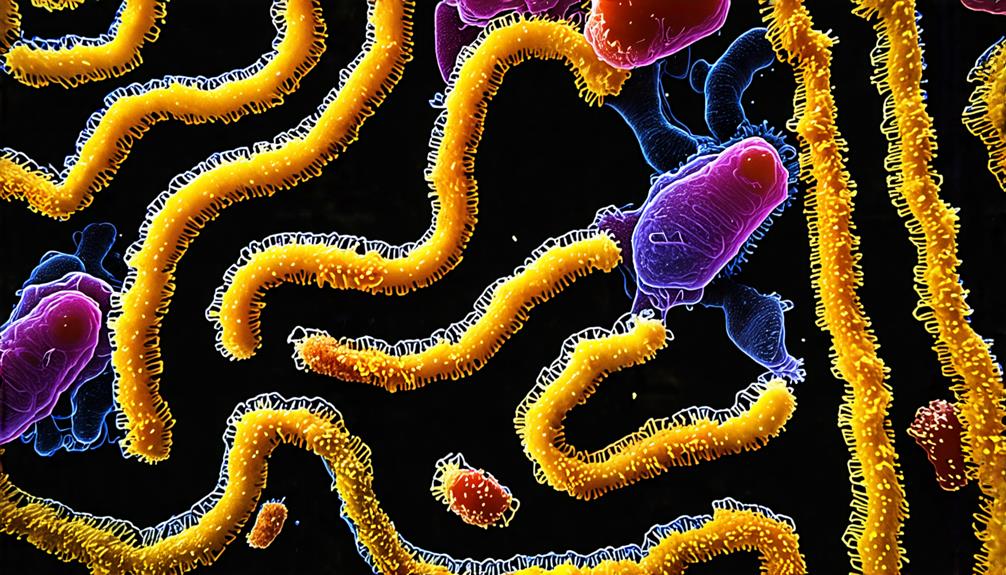You might think problem-solving requires a brain, but slime molds prove otherwise. These brainless organisms can navigate complex mazes with surprising efficiency, challenging our understanding of intelligence. By secreting and following their own chemical trails, slime molds create a rudimentary memory system that allows them to avoid dead ends and find ideal paths. This remarkable ability has caught the attention of scientists across various fields, from biology to computer science. As you consider the implications of this simple yet effective problem-solving strategy, you'll discover how nature's solutions can inspire groundbreaking advancements in technology and urban planning.
Key Takeaways
- Slime molds navigate mazes efficiently by exploring all possible pathways and identifying the shortest routes.
- They create a memory system using slime trails to avoid revisiting dead ends in the maze.
- Internal flow dynamics and rhythmic contractions assist slime molds in measuring branch lengths and making decisions.
- Slime molds can find paths that are 22% shorter when comparing different routes through a maze.
The Brainless Problem Solver

Although lacking a brain, slime molds like *Physarum polycephalum* display remarkable problem-solving abilities when maneuvering through mazes and optimizing networks.
You'll find these brainless slime molds can solve mazes with surprising efficiency. As they explore an agar plate, they leave behind slime trails, effectively creating a memory system to avoid dead ends. When faced with multiple paths, *Physarum polycephalum* makes decisions that consistently lead to the shortest path between food sources.
What's more, these organisms can reconstruct themselves after being fragmented, allowing them to continue solving mazes without missing a beat. Their branching behavior is influenced by environmental cues and food distribution, showcasing a primitive form of intelligence.
You'll be amazed to learn that *Physarum* can even optimize connections between multiple food sources, mimicking the efficiency of urban transportation systems.
Maze Navigation Techniques
You'll be amazed by the sophisticated maze navigation techniques employed by slime molds, especially *Physarum polycephalum*, as they work out complex pathways with remarkable efficiency. These brainless organisms navigate mazes by exploring all possible pathways, using slime trails as a memory to avoid revisiting routes.
They identify the shortest path between two food sources by branching into different maze sections and retracting to optimize growth. *Physarum polycephalum*'s internal flow dynamics allow it to measure branch length and adapt movement based on resistance and cytoplasmic flow rates.
During navigation, it exhibits rhythmic membrane contractions, pushing cytoplasm through branches to aid in decision-making. Slime molds consistently choose paths that are 22% shorter when comparing multiple routes to food sources, demonstrating their ability to optimize navigation efficiently.
This remarkable problem-solving ability showcases nature's ingenuity in creating simple yet effective solutions.
Implications for Artificial Intelligence

The remarkable problem-solving abilities of slime molds have caught the attention of AI researchers, who see potential in applying these biological strategies to improve machine learning algorithms and optimization techniques.
You'll find that slime molds' maze navigation skills closely resemble AI pathfinding methods like Dijkstra's algorithm and A* search.
Their ability to find the shortest path and optimize resource allocation has inspired new approaches in artificial intelligence for transportation networks and urban planning.
Conclusion
You've discovered the fascinating world of slime molds and their maze-solving prowess.
These brainless organisms challenge our understanding of intelligence and problem-solving.
As you investigate deeper, you'll find their strategies inspiring new approaches in AI and urban planning.
Remember, nature's simple solutions often lead to complex innovations.
Keep exploring the potential of these remarkable creatures – you might just uncover groundbreaking applications that could reshape how we tackle optimization problems in various fields.

Leave a Reply